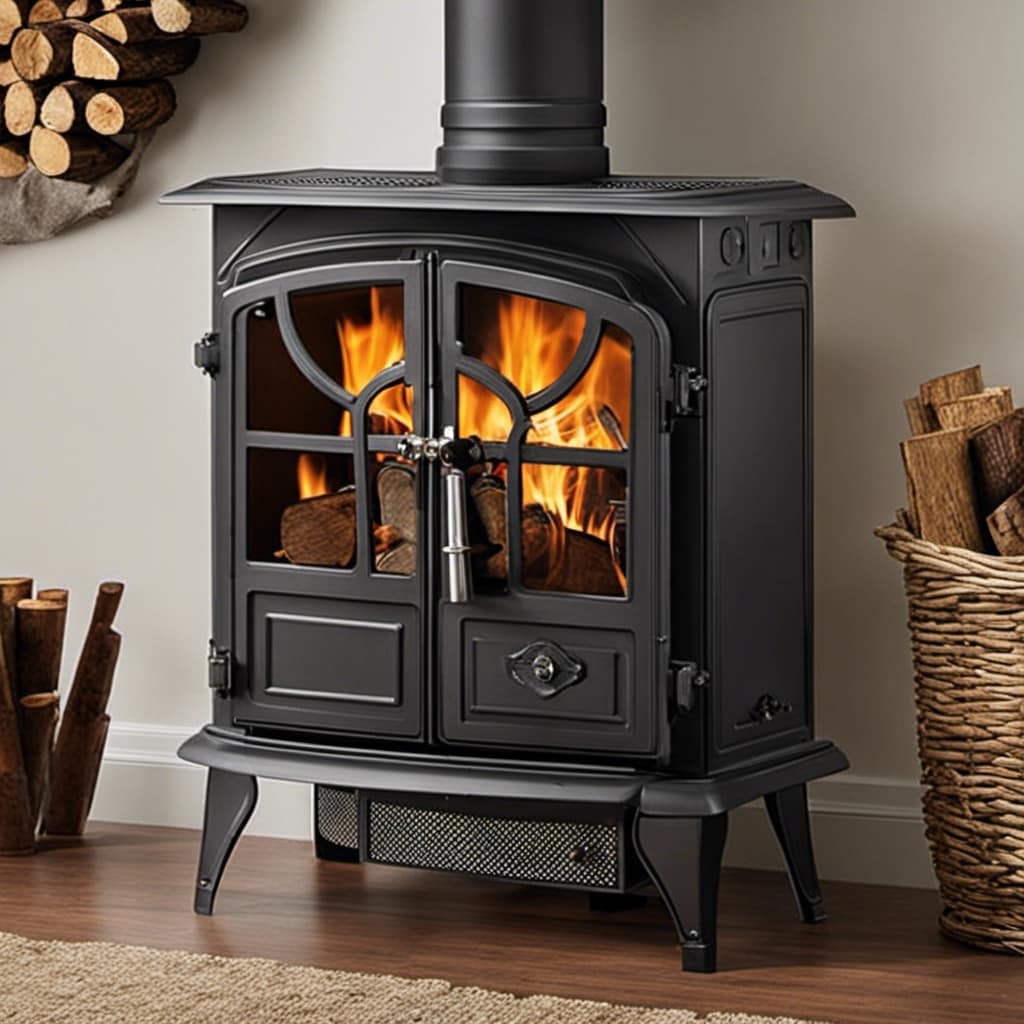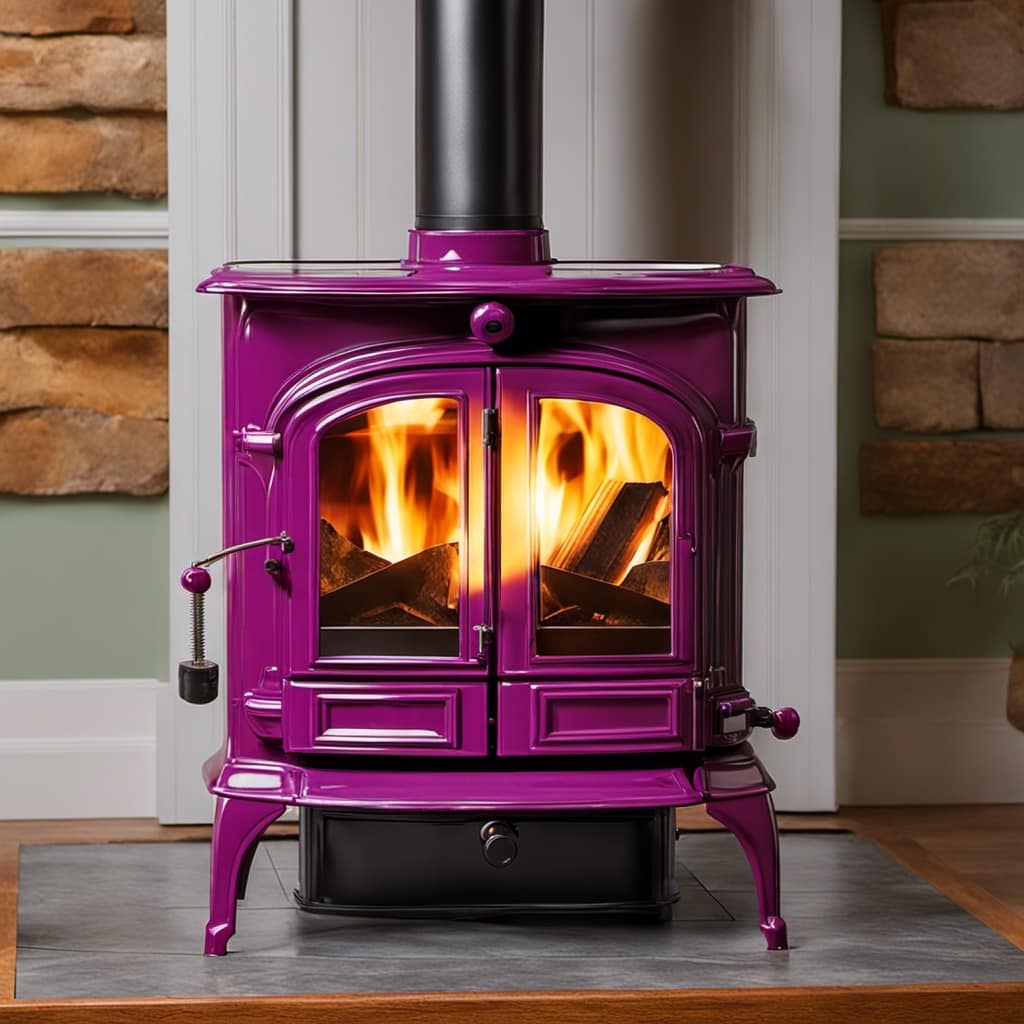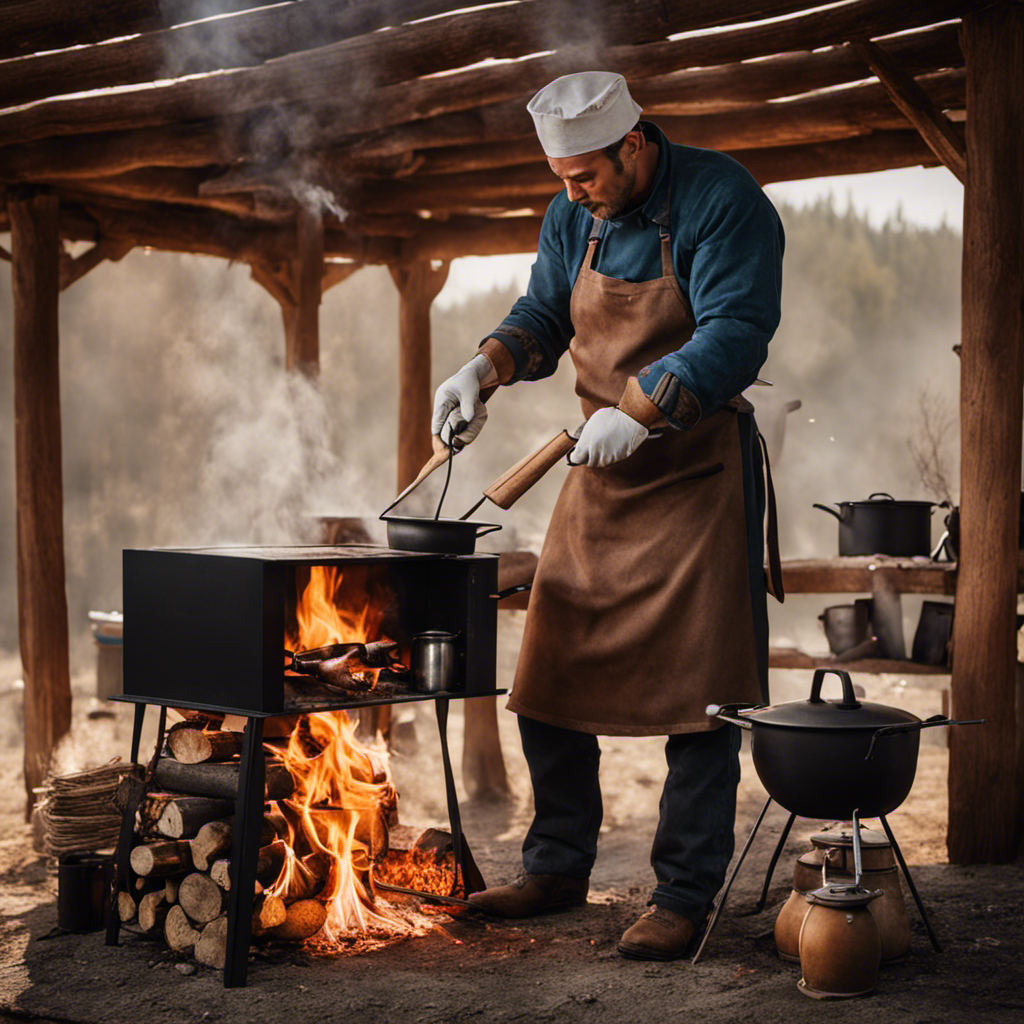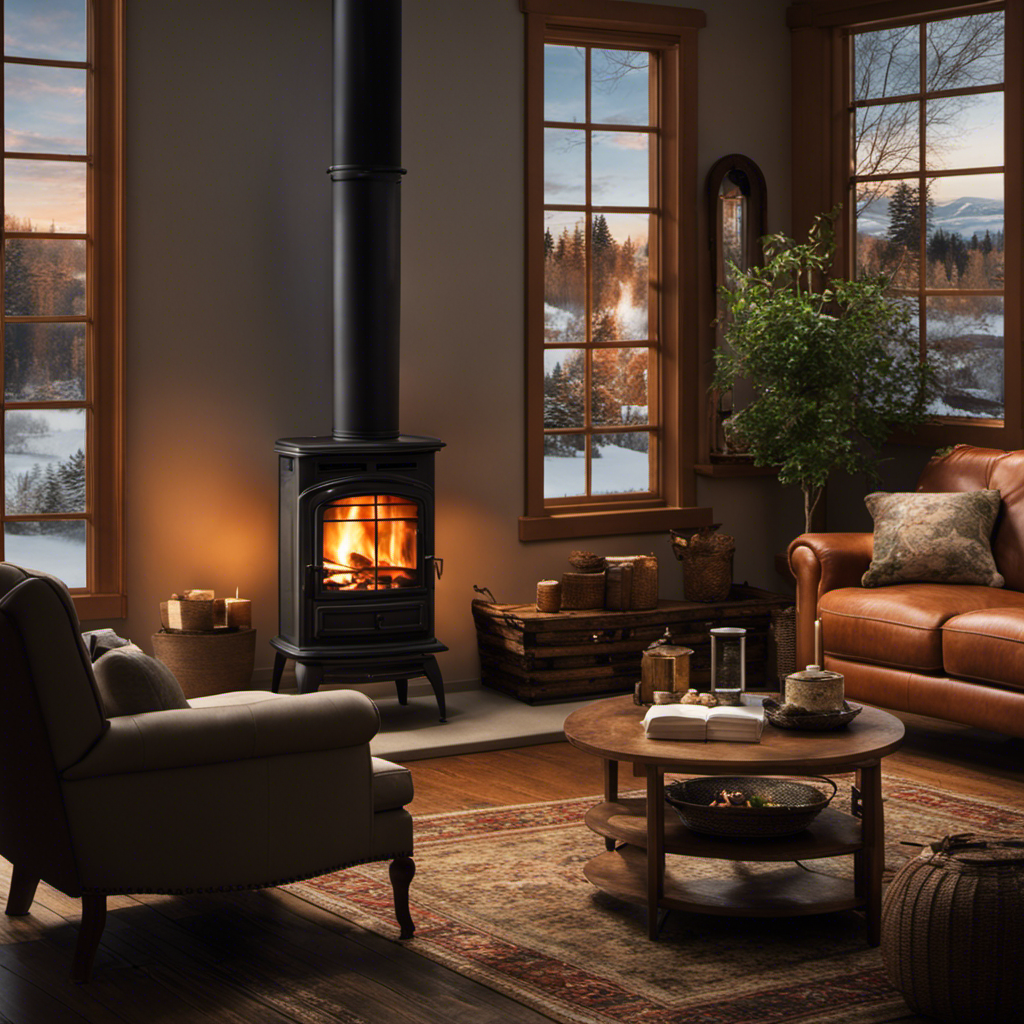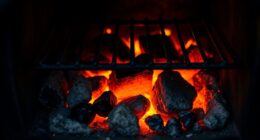Were you aware that by installing a wood stove chimney through the roof, you can greatly enhance the efficiency and overall performance of your heating system?
If you’re looking to upgrade your home’s heating capabilities, then this article is for you.
In this guide, I’ll walk you through the step-by-step process of installing a wood stove chimney through the roof.
From assessing the roof and gathering the necessary tools to ensuring proper ventilation, you’ll have all the information you need to successfully complete this project.
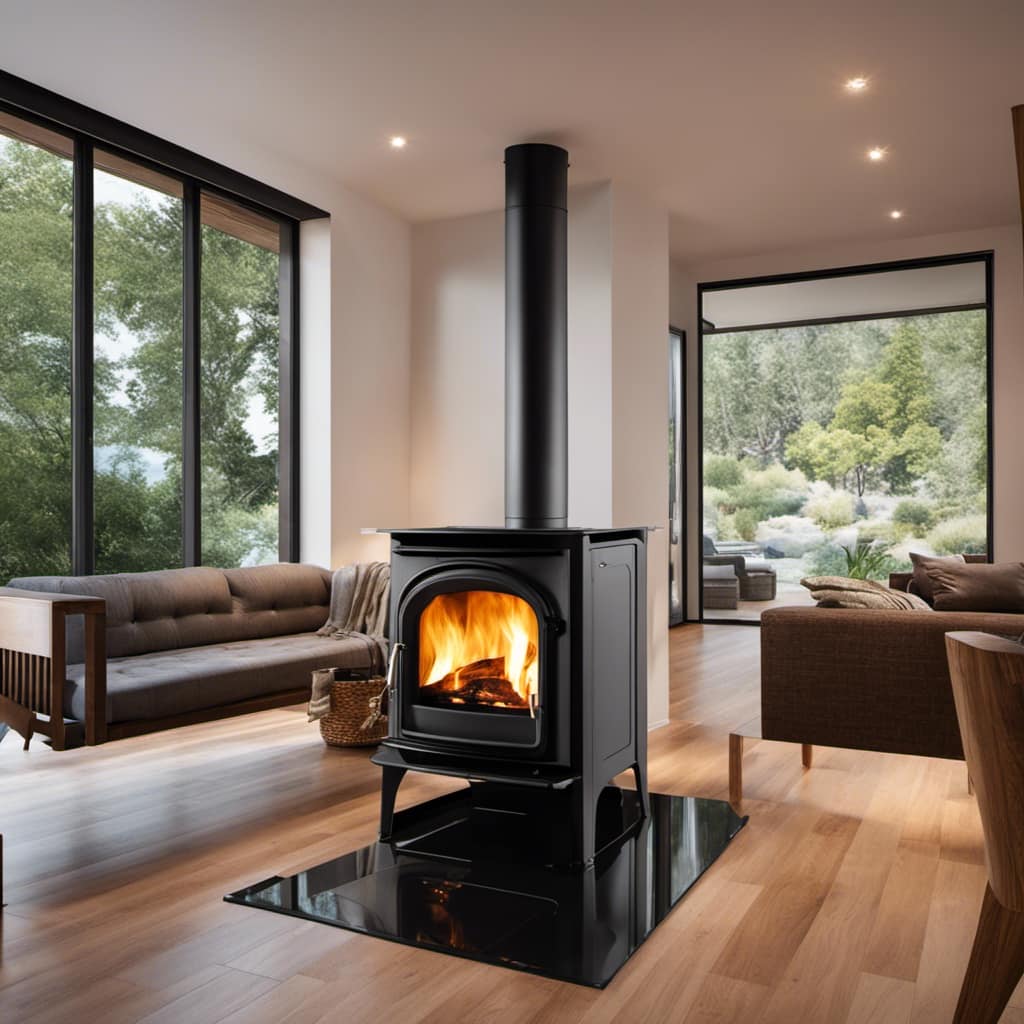
Key Takeaways
- Conduct a thorough roof inspection and ensure it is solid and stable enough to support the chimney.
- Adhere to local building codes and regulations when determining the height and specifications of the chimney.
- Use the necessary tools and materials, such as a chimney kit, flashing, storm collar, and insulation, for a proper installation.
- Ensure proper ventilation by considering the chimney height, diameter, and installing a chimney cap.
Assessing the Roof and Chimney Requirements
I’m considering the roof structure and chimney specifications for installing the wood stove chimney. Before I proceed with the installation, I need to conduct a thorough roof inspection to ensure its integrity. This inspection involves checking for any signs of damage, such as loose or missing shingles, leaks, or weak spots. It’s crucial to have a solid and stable roof to support the weight of the chimney.
Next, I need to determine the appropriate height for the chimney. The height is essential for proper draft and airflow. The general rule of thumb is that the chimney should extend at least 3 feet above the highest point where it passes through the roof. This ensures that the smoke and gases are carried away effectively and reduces the risk of downdrafts. It’s important to adhere to local building codes and regulations when determining the chimney height to ensure compliance and safety.
Gathering the Necessary Tools and Materials
To get started, I’ll need to gather all the necessary tools and materials for the installation. Here’s a list of items I’ll need:
-
Measuring tape: This will help me accurately determine the height and dimensions required for the wood stove chimney.

-
Chimney kit: It’s crucial to choose the right wood stove chimney. Look for a kit that’s specifically designed for wood stoves and meets local building codes.
-
Flashing and storm collar: These components will ensure a watertight seal between the chimney and the roof, preventing leaks.
-
Insulation: To maintain proper airflow and prevent heat loss, insulation should be installed around the chimney pipe.
Before beginning the installation process, it’s essential to prioritize wood stove chimney maintenance. Regular cleaning and inspections will help identify any damage or blockages, ensuring optimal performance and safety.

Preparing the Roof for Chimney Installation
Before proceeding with the installation process, it’s crucial to prepare the roof for the chimney. Proper roof preparation is essential to ensure a safe and effective installation.
Start by determining the ideal location for the chimney placement. Consider factors such as the distance from combustible materials and the height required for optimal draft.
Next, remove any existing roofing materials in the designated area. This may involve cutting a hole in the roof and carefully removing shingles or tiles. Ensure that the opening is large enough to accommodate the chimney pipe and flashing.
Once the area is clear, install the necessary roof supports or brackets to provide stability for the chimney. This will help prevent any potential movement or damage during high winds or storms.

With the roof prepared, you’re now ready to proceed with installing the wood stove chimney through the roof.
Installing the Wood Stove Chimney Through the Roof
After preparing the roof, I carefully guide the chimney pipe through the designated opening. Installing a wood stove chimney through the roof requires attention to detail and adherence to safety precautions. Here’s a step-by-step guide to help you get it right:
- Measure and mark the location for the chimney pipe on the roof.
- Cut a hole in the roof using a reciprocating saw or a hole saw, ensuring it’s slightly larger than the chimney pipe diameter.
- Apply roofing cement around the hole to create a watertight seal.
- Install a chimney flashing kit over the hole, securing it tightly to the roof for added protection against leaks.
Now that the wood stove chimney is securely installed through the roof, it’s crucial to ensure proper ventilation for safe operation.
Ensuring Proper Ventilation for the Wood Stove Chimney
Now that the wood stove chimney is securely installed through the roof, I need to make sure there is proper ventilation for safe operation. Ventilation considerations are crucial to maintain the integrity of the chimney and ensure efficient and safe operation of the wood stove. Proper ventilation allows for the removal of smoke, gases, and excess heat from the stove, preventing the buildup of harmful substances and maintaining a healthy indoor environment.
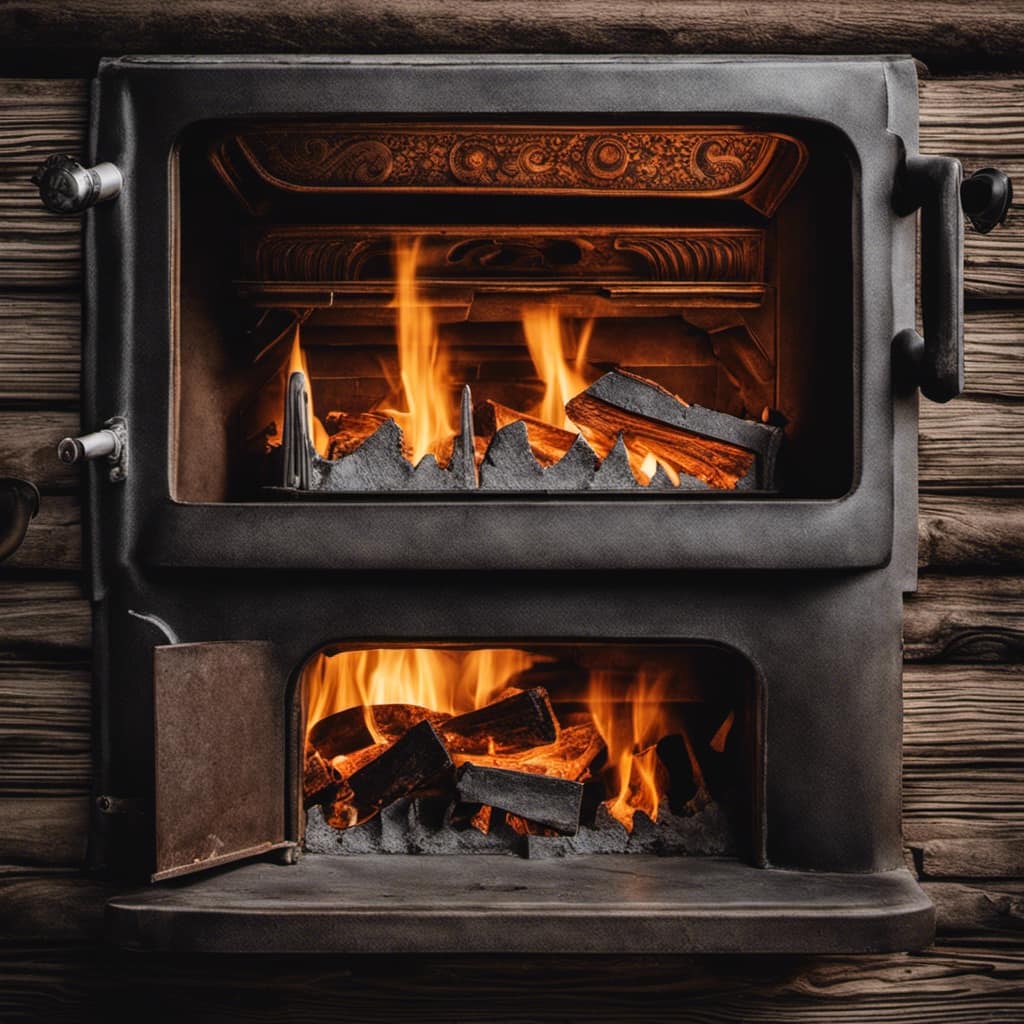
To achieve proper ventilation, it is important to consider the following factors:
-
Chimney Height: The chimney should extend at least 3 feet above the highest point where it passes through the roof to prevent downdrafts and ensure proper draft.
-
Chimney Diameter: The diameter of the chimney should match the requirements of the wood stove manufacturer to ensure efficient operation and proper airflow.
-
Chimney Cap: Installing a chimney cap can prevent debris, animals, and rainwater from entering the chimney, which can obstruct airflow and cause damage.

| Consideration | Importance |
|---|---|
| Chimney Height | Ensures proper draft and prevents downdrafts |
| Chimney Diameter | Promotes efficient operation and airflow |
| Chimney Cap | Prevents debris, animals, and rainwater from obstructing airflow |
Frequently Asked Questions
How Much Does It Typically Cost to Install a Wood Stove Chimney Through the Roof?
Installing a wood stove chimney through the roof can vary in cost due to factors such as materials, labor, and local regulations. DIY installation may save money, but professional installation ensures proper safety and compliance.
Can I Install a Wood Stove Chimney Through a Metal Roof?
Installing a wood stove chimney through a metal roof is possible, but it requires proper planning and materials. Ensure the chimney is sealed correctly to prevent leaks, and use a flashing kit designed for metal roofs.
Are There Any Specific Building Codes or Regulations I Need to Follow When Installing a Wood Stove Chimney Through the Roof?
When installing a wood stove chimney through the roof, it is important to adhere to specific building codes and regulations for the installation process. Safety precautions must also be followed to ensure a secure and efficient chimney system.
How Often Should I Clean and Maintain the Wood Stove Chimney?
I clean and maintain my wood stove chimney at least once a year. Signs that indicate it needs cleaning include excessive smoke, a strong odor, or a buildup of creosote.

Is It Necessary to Hire a Professional for the Installation, or Can I Do It Myself?
Hiring a professional for wood stove chimney installation has its pros and cons. While it ensures expertise and safety, it can be costly. DIY installation is possible, but follow these tips to ensure a safe and effective installation.
Conclusion
In conclusion, installing a wood stove chimney through the roof requires careful assessment of the roof and chimney requirements. This includes evaluating the structural integrity of the roof and determining the appropriate size and type of chimney for the wood stove.
Once the assessment is complete, it is important to gather the necessary tools and materials for the installation. This may include a ladder, saw, hammer, nails, roofing cement, chimney pipe, and flashing. Ensuring that all the necessary items are on hand before beginning the installation will help streamline the process and prevent delays.
Preparing the roof for installation is the next step. This involves locating the ideal placement for the chimney, marking the area, and cutting a hole through the roof. It is crucial to follow safety guidelines and use proper techniques to prevent any damage to the roof or injury to oneself during this stage.
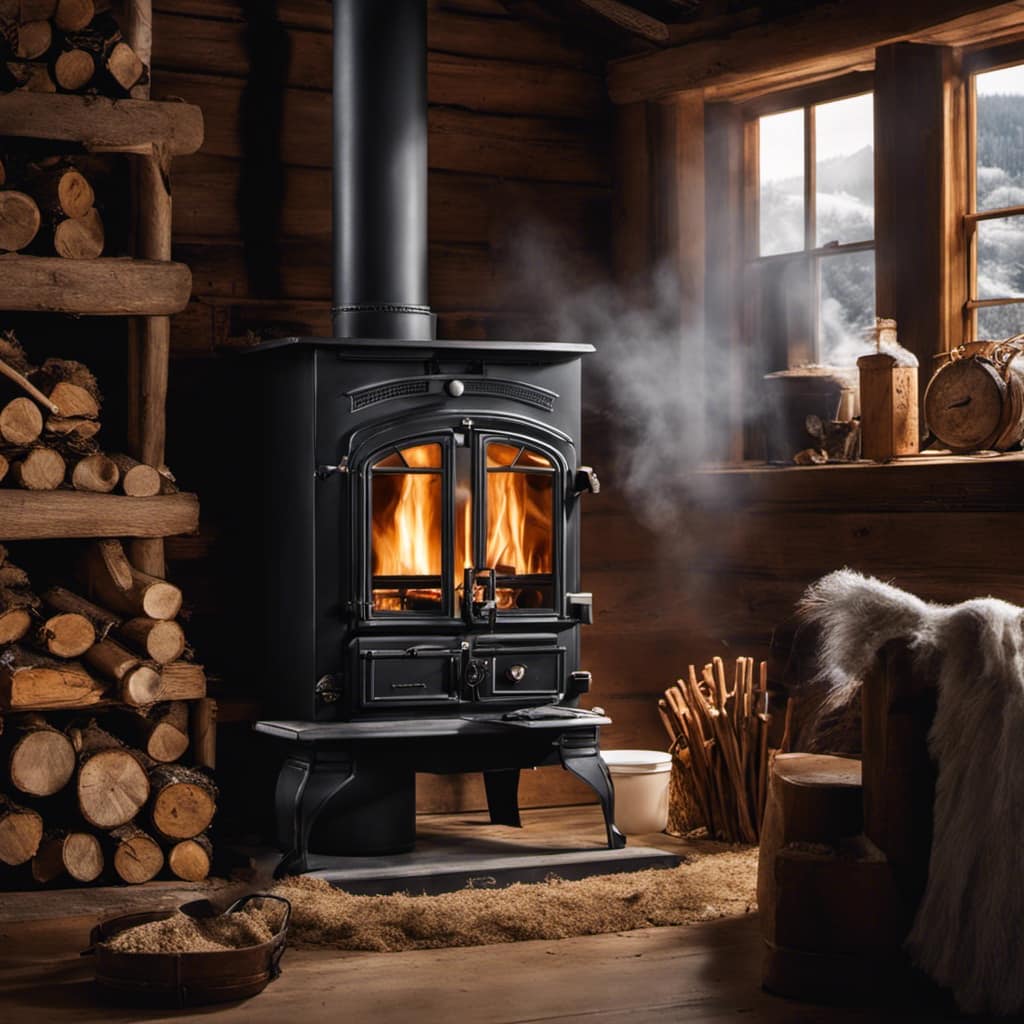
Once the roof is prepared, the wood stove chimney can be installed. This typically involves connecting the chimney pipe to the wood stove and extending it through the roof hole. Proper ventilation is crucial for safe and efficient operation of the wood stove, so it is important to ensure that the chimney is installed correctly and securely.
By following these detailed instructions, you can successfully install a wood stove chimney through your roof and enjoy the warmth and comfort it provides. Taking the time to assess the roof and chimney requirements, gather the necessary tools and materials, and prepare the roof for installation will ensure a smooth and successful project.
Growing up surrounded by the vast beauty of nature, Sierra was always drawn to the call of the wild. While others sought the comfort of the familiar, she ventured out, embracing the unpredictable and finding stories in the heartbeat of nature.
At the epicenter of every remarkable venture lies a dynamic team—a fusion of diverse talents, visions, and passions. The essence of Best Small Wood Stoves is crafted and refined by such a trio: Sierra, Logan, and Terra. Their collective expertise has transformed the platform into a leading authority on small wood stoves, radiating warmth and knowledge in equal measure.

